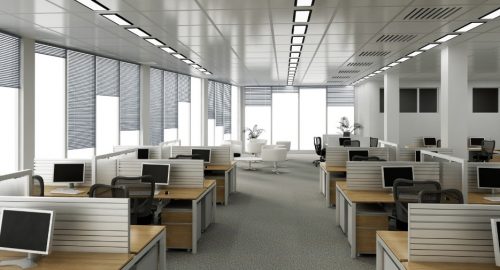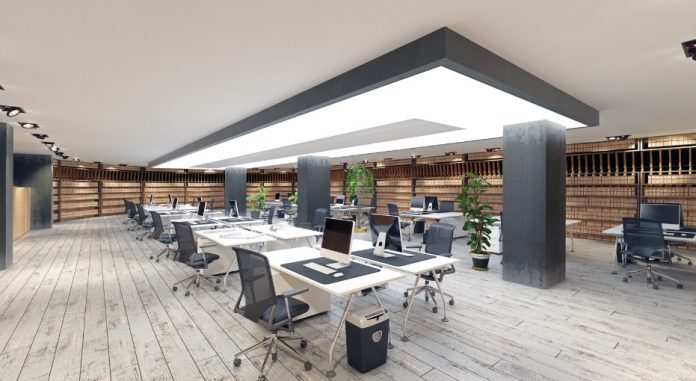7 Reasons Why Your Business Should Consider Lighting Restoration
Many businesses are finding that they need to reduce their impact on the environment and adhere to the increasingly strict regulations around sustainability. Lighting restoration is one solution to energy efficiency issues and by taking on board the principles of the circular economy, businesses can extend the life of their lighting systems, save money, increase efficiency and reduce their carbon footprint. In this post, we will list seven important reasons why your business should consider lighting refurbishment.
1. Significant Energy Savings

Traditional lighting systems, such as incandescent and fluorescent bulbs, are well known energy wasters, and they can contribute to your business’s operational costs and carbon footprint. Instead of throwing away all your old light fittings, it is important to first assess whether they can be restored and refurbished.
One way of updating the fittings is to change the old-fashioned bulbs to LED or COB Chip bulbs. COB (Chip-on-Board) chips have multiple LED chips mounted directly onto a substrate or circuit board. COB chips are commonly used in streetlights, downlights and retrofit lamps.
They offer a balance of high light output, compact size and potential cost savings and by transitioning to LED lighting through the lighting refurbishment process, you could achieve energy savings of up to 80%. These savings will then translate into lower electricity bills and a reduced reliance on non-renewable energy sources.
2. Saving Money Over the Lifespan of the Light
Investing in lighting remanufacturing may require an initial financial outlay, but the long-term cost savings can be substantial. By restoring the light fitting and using energy-efficient LED bulbs or COB chip bulbs, the lifespan of the bulb could increase to up to 50,000 hours or more. This increased longevity will remove the need for frequent replacements and maintenance and can recoup the initial upfront costs of the restoration over time.
3. Reduce Your Carbon Footprint
Lighting refurbishment also aligns with the principles of a circular economy, which promotes the responsible use of resources and aims to minimise waste. Businesses can reduce their environmental impact by remanufacturing existing lighting systems instead of throwing them away.
This approach not only conserves valuable materials but also reduces the energy and emissions that are needed to manufacture new products from scratch. If certain parts of a light fitting cannot be reused or recycled, they should be disposed of in accordance with the WEEE Directive’s guidelines.
4. Compliance with Incoming Legislation and UN 2050 Guidelines
Governments and international organisations around the world are prioritising sustainability, so businesses that decide to restore their lighting to more energy-efficient systems will be better placed to comply with incoming legislation and guidelines.
The United Nations’ 2050 net-zero emissions target is a driving force behind the efforts of many countries to reduce their carbon footprints. By refurbishing your light fittings, your business can show its commitment to these goals and be compliant in plenty of time.
5. Improved Ethical Awareness

Consumers and business stakeholders are becoming more aware of the environmental and social impacts of businesses and their operations. Lighting refurbishment can help to improve the ethical reputation of your company and hopefully attract environmentally conscious customers.
By refurbishing and restoring your lighting, you demonstrate a forward-thinking approach to sustainability, which can increase confidence from your investors and give your business a boost in the environmentally conscious corporate environment.
6. Enhanced Lighting Quality
The restoration of your lights does not have to compromise on quality. In fact, many restored lighting systems that use LED lights offer a better quality of illumination compared to their traditional counterparts. With advanced refurbishment processes and by following an 8-point remanufacturing structure, these lighting systems are carefully assessed, disassembled, cleaned, repaired and tested. Once this process is complete, the light fitting often exceeds its original specifications and gives out a much brighter, cleaner light.
7. Versatility and Flexibility
Light remanufacturing is not a one-size-fits-all solution. It offers versatility and flexibility to accommodate the different needs of many diverse types of businesses and varieties of light fittings. From comprehensive lighting system overhauls to targeted upgrades or conversions, remanufacturing techniques can be tailored to suit your specific requirements. This flexibility allows businesses to prioritise areas that require immediate attention while gradually transitioning to more sustainable lighting solutions over time.
Conclusion
Lighting restoration presents a great opportunity for businesses to embrace sustainability, reduce operational costs and contribute to a circular economy. By undertaking a scheme of refurbishment and remanufacturing of your lighting systems, your company can not only improve its environmental credentials but also position itself as a forward-thinking business that embraces environmentally responsible practices.
As the demand for environmentally sustainable solutions continues to grow, lighting restoration offers a way forward that balances economic, environmental and ethical considerations and, of course, provides great illumination for your business.




































